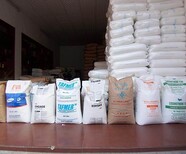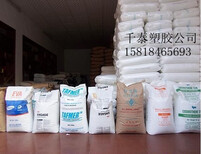EVA加拿大AT4030AC驻马店
- 面议
- 2018-11-09 09:18:24
- EVA加拿大AT4030AC驻
- 周生 15818465693
- 广东省东莞市樟木头塑胶中心城三期
信息介绍
详细参数
EVA加拿大AT4030AC驻马店 、▲‘PC CGH1020KR、、‖。PMMA ZK50、、▲‘PP K1005、、▲‘PC 6557 、、▲‘TPU ALRE50D、、▲‘PC H2000UR、、▲‘PA66 A60GFL、、▲‘PBT FGS600F40、、▲‘PA66 S3KC、、▲‘TPU ALRCL65D、、PMMA P-601 、、▲‘PBT WX9604-WT、、▲‘PP 5E66R 、EPDM 7001、、▲‘PC PL-9000、、ASA HGM、、TPV 121-65M300、 PA/ABS M/MK BK、、▲‘PP QB510A 、、▲‘PP F2011、、▲‘POM TC702、、PC/、▲‘ABS 3813BW、、▲‘PA66 26FE5、、▲‘PP 3950、、LCP E130i、、▲‘PA66 A3K、、▲‘PBT 700FP、POE 8705、、TPE 2080B/N 、、▲‘PPS 758、、PMMA IRD-70、、▲‘TPE HX6IMN、、▲‘PP 3825WZ 、、▲‘PC 3027U-C、、▲‘PA66 BM70G20HSLX、、▲‘TPU K-385A、、▲‘PP H700-12A、、▲‘PA6 SLVHPL128、、▲‘PBT VIC4350、、▲‘PA6 TN 2200、PPO LXR050、、▲‘PBT 2500、、▲‘PP H238W 、、▲‘PC 1705G10、、▲‘PPS A515、 PA9T N1000A、、▲‘TPE 3655B/N、、▲‘PA6 K125A、、▲‘TPU S60DN、、TPV 8191-75B500、、▲‘PEI 1000F-7101、、▲‘PP EP300C、、▲‘TPE TF6CGN、、▲‘PBT 1494X02、、▲‘POM M25-44、、▲‘PP 20MBTF 、、‖。PP 4220、、▲‘PP 1609、、▲‘ABS GP-35 BK、、▲‘TPE TF6ECN、、▲‘PC GN-3115R、、▲‘PA66 A3U、、▲‘PA66 55HSP BK、、▲‘PC EFX810ME、、▲‘PP CX0281 、、▲‘TPE 20-05HE、、PC/、▲‘ABS CF102、、▲‘TPE TC7CCT、
EVA加拿大AT4030AC驻马店Optical properties of PMMA
1, visible light: high transmittance of visible light. PMMA is the best polymer transparent material at present, and its visible light transmittance is 92%, which is [1] higher than that of glass.
1. ultraviolet light: quartz can be completely ultraviolet light, but the price is high, ordinary glass can only pass through 0.6% ultraviolet ray, but PMMA can pass through 73%. PMMA can't filter out ultraviolet (UV). Ultraviolet light penetrates PMMA, and part of the manufacturer [2] is coated on the surface of the PMMA to increase the effect and properties of the UV light. On the other hand, PMMA has better stability than polycarbonate in the condition of ultraviolet light irradiation.
2. infrared: PMMA allows infrared rays less than 2800nm wavelengths to pass through. Longer wavelengths of IR, less than 25000nm, are basically blocked. There is a special colored PMMA that allows a specific wavelength of IR to pass through and block visible light, (used for remote control or heat, etc.).
The POM enhanced POM
The main reinforcement materials are glass fiber, glass ball or carbon fiber, and glass fiber is most commonly used. The mechanical properties of the reinforced glass can be increased by 2~3 times and the hot deformation temperature is increased by 50 degrees or more.
The high oil POM
Adding graphite, F4, molybdenum disulfide, lubricating oil and low molecular weight PE to POM can improve its lubrication performance. For example, adding 5 copies of F4 in POM can reduce the friction factor by 60%, and increase the wear resistance by 1~2 times. In addition, the addition of liquid lubricating oil in POM can greatly improve the wear resistance and the limit of PV. In order to improve the dispersing effect of oil, the oil absorption carrier, such as carbon black, barium hydroxide, and ethylene propylene rubber, should be added. The friction of adding 5% oil POM is increased by 72%, and the limit PV can reach 3.9MPa m/s (pure POM is 0.213MPa m/s), which is 3~20 times that of other engineering plastics.
PPO B has good electrical properties in a wide range of temperature and frequency. It has no hydrolysis and shrinkage, and has no self extinguishment. It is resistant to inorganic acid, alkali, aromatic hydrocarbon, halogenated hydrocarbon and oil. It is prone to swelling or stress cracking. C, it has the advantages of large rigidity, high heat resistance, refractory, high strength and so on. D and polyether have the advantages of wear-resistant, non-toxic, and resistant to pollution. Dielectric constant and dielectric loss of E and PPO plastic materials are among the smallest varieties in engineering plastics. They are hardly affected by temperature and humidity. They can be used in low, medium and high frequency electric fields. The load deformation temperature of F and PPO can reach more than 190 degrees C, and the embrittlement temperature is -170 C. G, its main shortcomings are poor melt fluidity and difficult processing.。
- EVA加拿大AT4030AC驻
- 工程塑料
- 周生
PBT日本宝理304SA遂?信息
-
 丽江代写融资计划书多少钱¥ 12345
丽江代写融资计划书多少钱¥ 12345 -
 创业找方向河南巩义煜鑫废旧汽车壳撕碎机助你成功¥ 58500
创业找方向河南巩义煜鑫废旧汽车壳撕碎机助你成功¥ 58500 -
 衡水修水泥混凝土路面专用4米振动梁,振捣梁,路面整平机,框架式摊铺机¥ 5400
衡水修水泥混凝土路面专用4米振动梁,振捣梁,路面整平机,框架式摊铺机¥ 5400 -
 青铜爵杯交易要注意什么¥ 1000000
青铜爵杯交易要注意什么¥ 1000000 -
 32KJ压路机-漳州长泰县多边形压路机经销商¥ 40000
32KJ压路机-漳州长泰县多边形压路机经销商¥ 40000 -
 广东高要竹木纤维集成墙板价格¥ 36
广东高要竹木纤维集成墙板价格¥ 36












